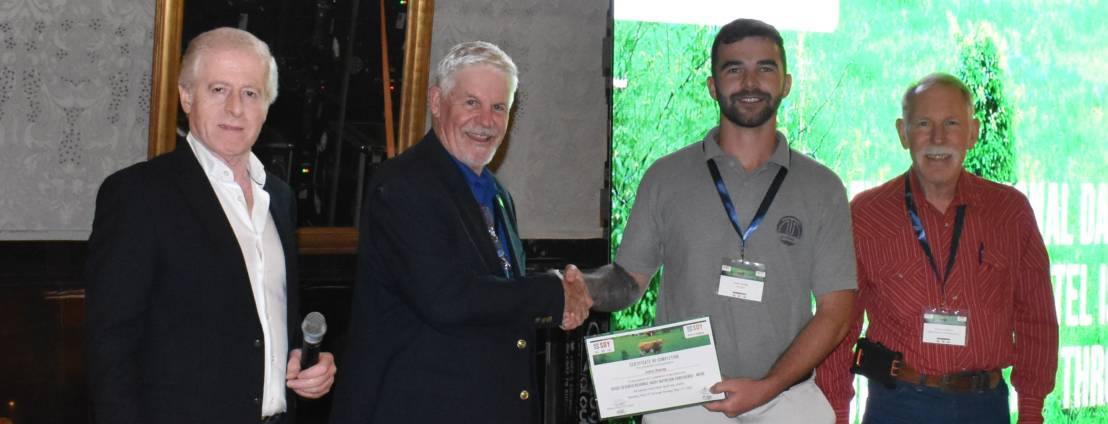
The nutritional advantages of U.S. Soy in dairy cow feed were on full display at USSEC’s recent annual Regional Dairy Nutrition conference in Jordan. Farmers from major dairy operations and feed millers in the Middle East/North Africa region joined in training that covered the sustainability, health, feeding and milk yield of dairy cows.
The Middle East/North Africa region is home to 6 percent of the global population and the countries of Saudi Arabia, Egypt, Tunisia, Morocco and Algeria were the fastest growing feed industry in the world last year.
Dennis Fujan, a soybean farmer from Nebraska and American Soybean Association Director, presented an overview of his fourth-generation family farm, sustainability practices, soybean growing season and how his soybeans are transported from field to market.
“Attendees showed a lot of interest with good questions and comments,” Fujan said, “One gentleman told me how grateful he was for this conference because of changes he made to his operation from knowledge he gained at previous conferences.”
Nearly 100 participants from a dozen countries including Algeria, Egypt, Jordan, Morocco, Saudi Arabia, Tunisia and the United States were on hand for the four-day conference which brought key stakeholders together to learn more about how U.S. Soy can benefit dairy operations in the region.
“The FAS (Foreign Agricultural Service) office in Amman is very proud of USSEC’s work in organizing and executing a business oriented, scientific based, and much needed gathering of regional dairy businesses,” said Mohamed Khraishy, FAS Senior Agricultural Specialist. “Although it was convened at the lowest point on earth – the Dead Sea – it came at a time of high demand, while representing the high caliber of the U.S. Soy industry.”
Customers and presenters alike were appreciative for the opportunity to be learning together in person.
“These types of activities help us to reconnect with some of our current buyers after two years of isolation,” said Daniel Secondi, Director International Merchandising at Perdue Agribusiness. “There is triangle between U.S. suppliers, overseas buyers and USSEC and a conference like this definitely helps us strength these relationships.”
Participants from Egyptian Milk Producers Association expressed their appreciation to USSEC and the speakers for the expertise shared at the conference, which will enable them to improve production and animal health. Egypt is the third largest soybean export market for the U.S., and home to a USSEC Soy Excellence Center.
“I am pleased to have had the opportunity to attend and learn how we can enhance animal health through quality feed and other factors,” said Ahmad Abd Elkhabir, Area Manager of Animal Nutrition at IFFCO Group.
Along with hearing soy market updates, USSEC’s regional customers learned about the added value of soy products in animal feed and the advantages of U.S. Soy’s nutrient content, consistency, sustainability, reliability and quality.
This article was partially funded by U.S. Soy farmers, their soy checkoff, and the soy value chain.
